7 Common Causes of Warehouse Fires
- April 1, 2024
- 7:00 am
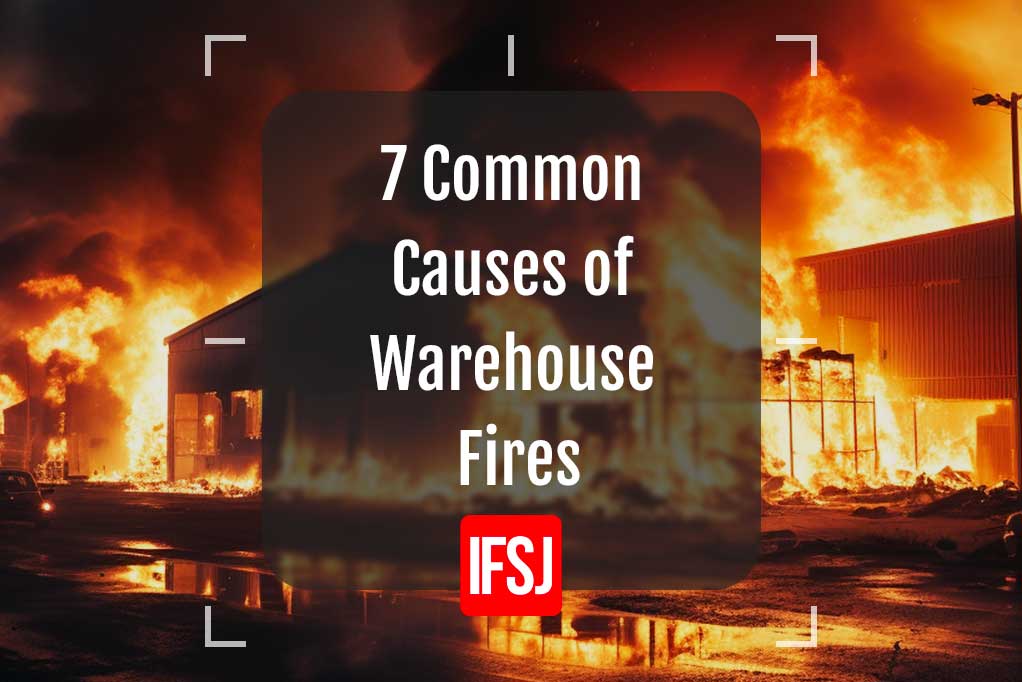

Simon Burge
Share this content
Warehouses play a crucial role in supply chain management, but they are not immune to the threat of fires.
Warehouse fires can cause business losses in the hundreds of millions every year.
The stakes are high when it comes to warehouse fires, and understanding their common causes and prevention strategies is vital for safeguarding both goods and personnel.
In this article we’ll delve into 7 of the most common causes of warehouse fires, why warehouse fires are so dangerous and ways to help prevent them.
7 Common Causes of Warehouse Fires
Warehouses, crucial parts of supply chain management, have various risks, and fires are a significant concern.
To strengthen these logistical centres against fire risks, it’s essential to know the common causes thoroughly.
Arson

Arson, the deliberate act of setting fires, ranks among the common causes of warehouse fires, with 15% of all warehouse fires being deliberate.
Intentional and malicious, arson poses a severe threat, leading to extensive property damage and endangering lives within the facility.
The deliberate ignition of flames in warehouses underscores the need for heightened security measures and vigilance to thwart potential acts of arson, protecting both assets and personnel.
Electrical Equipment
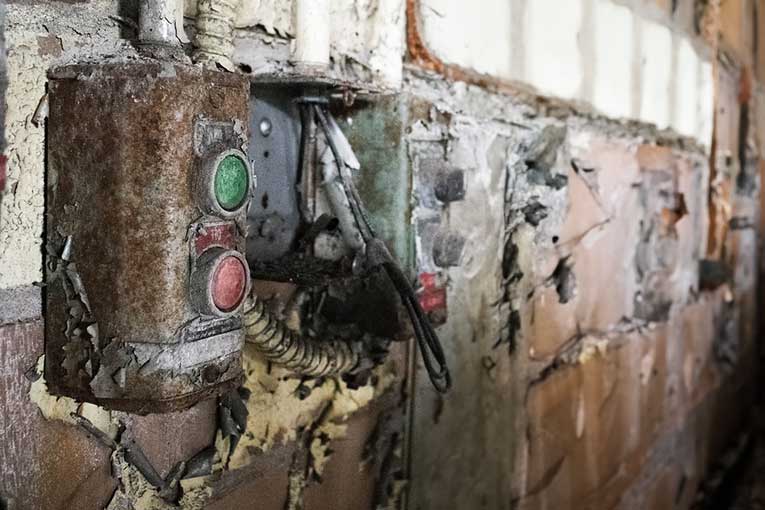
Faulty electrical equipment poses a common threat, leading to warehouse fires.
Overloaded circuits, damaged wiring, or neglected maintenance can turn these systems into ignition sources.
Preventing electrical malfunctions through regular checks is vital to ensure the safety of warehouses and protect against the potential devastation caused by fires.
Heating Equipment

Poorly maintained heating systems present a common risk for warehouse fires, especially during the winter months.
Malfunctions or improper usage of industrial heaters can turn them into sources of ignition.
Regular maintenance and proper handling are crucial to mitigate these risks, ensuring the safety of both the warehouse environment and its occupants.
Combustible Materials
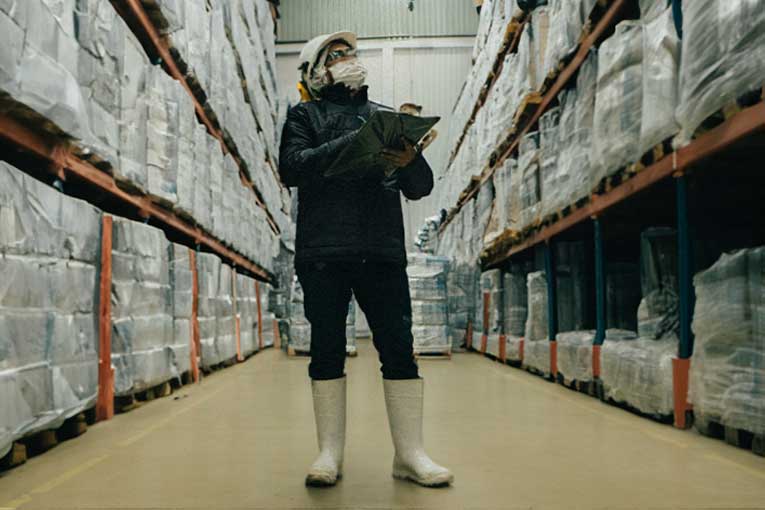
Warehouses storing combustible materials face an elevated risk of fires.
Flammable substances, when not handled or stored properly, become potential ignition sources.
The proximity of these materials to potential heat sources increases the likelihood of accidental fires.
To mitigate this risk, proper storage protocols, adherence to safety guidelines, and regular inspections are essential, creating a safer environment within the warehouse and reducing the potential for devastating fires.
Automatic Storage Retrieval Systems (ASRS)
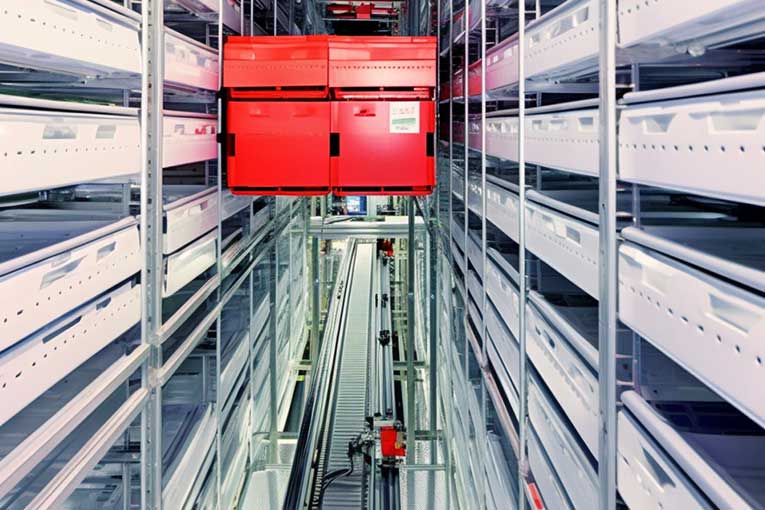
Automated Storage Retrieval Systems, while enhancing efficiency, can pose fire hazards in warehouses.
Relying on intricate electrical components, these systems may experience malfunctions leading to fires.
Ensuring the proper maintenance and functioning of ASRS is crucial to prevent potential fire incidents.
Vigilance in monitoring these automated systems helps minimise the risk, contributing to the overall safety of the warehouse environment.
Smoking

Smoking near warehouses introduces a significant fire hazard.
Igniting cigarettes in restricted areas or improper disposal of cigarette butts can lead to accidental fires, particularly in environments with combustible materials.
The combination of open flames and flammable surroundings heightens the risk.
Implementing strict no-smoking policies, designated smoking areas, and proper disposal measures are essential preventive measures to reduce the likelihood of fires caused by smoking within the warehouse premises.
Human Error

Human error is a prevalent factor contributing to warehouse fires.
Mistakes in equipment handling, incorrect storage of flammable materials, or neglecting safety protocols can result in unintentional fires.
Awareness, proper training, and adherence to safety guidelines are crucial to mitigate the risks associated with human error.
Implementing robust training programs and fostering a safety-conscious culture within the warehouse environment play pivotal roles in reducing the potential for fires caused by human mistakes.
Why are Warehouse Fires so Dangerous?
Warehouse fires pose significant dangers due to their potential for rapid escalation and severe consequences.
Several factors contribute to the high risk associated with these incidents:
Extensive Property Damage
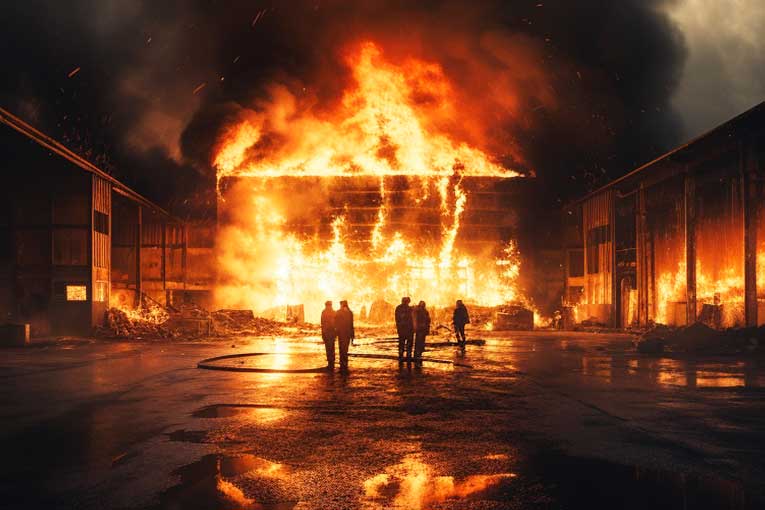
Warehouse facilities often house valuable inventory, machinery, and equipment.
Fires can lead to substantial financial losses, impacting the business’s operations and long-term viability.
Risk to Human Lives
The safety of personnel working within warehouses is paramount.
Fires can lead to injuries or fatalities, especially if evacuation procedures are not efficiently executed or if there are delays in emergency response.
Disruption of Supply Chains
Warehouse fires can disrupt the entire supply chain, affecting the timely delivery of goods and services.
This disruption can have cascading effects on businesses, customers, and interconnected industries.
Environmental Impact
Depending on the nature of stored materials, warehouse fires can result in environmental hazards.
The release of pollutants, toxins, or hazardous substances can contaminate air, soil, and water, posing long-term environmental risks.
Structural Damage
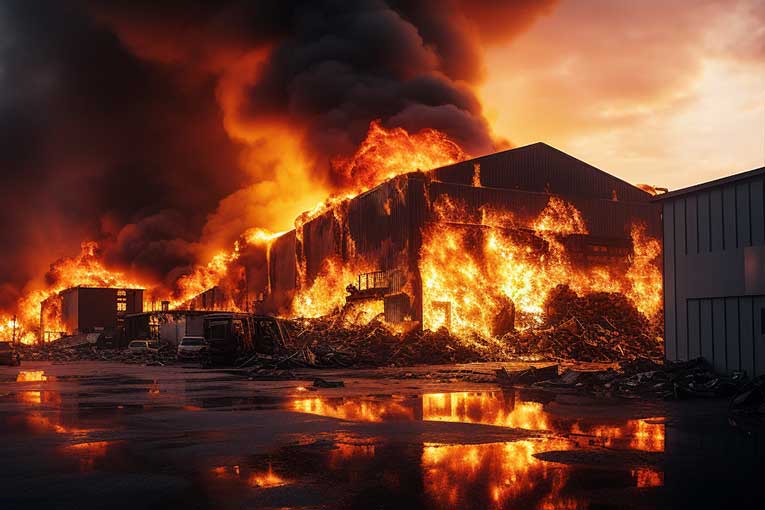
Intense heat and flames can cause structural damage to the warehouse itself, compromising its integrity.
Collapses or structural failures during a fire can exacerbate the dangers and hinder firefighting efforts.
Challenges for Firefighters
Warehouses are often expensive structures, presenting challenges for firefighting efforts.
The sheer size and the potential for limited access points can make it difficult for firefighters to quickly contain and extinguish the blaze.
Smoke Inhalation Risks
In addition to flames, the smoke generated during warehouse fires poses serious health risks.
Smoke inhalation can lead to respiratory issues, and the toxic byproducts of combustion can have immediate and long-term health consequences.
Potential for Explosions
Depending on the nature of the materials stored, warehouses may contain combustible or explosive substances.
Fires can trigger explosions, further intensifying the danger and complicating firefighting strategies.
How Can Warehouse Fires be Prevented?
Preventing warehouse fires involves a comprehensive approach that addresses potential risks and incorporates effective preventive measures:
Fire Risk Assessments

Conducting regular fire risk assessments is a fundamental step in warehouse fire prevention.
Identifying potential fire hazards and evaluating the effectiveness of existing preventive measures allow for the implementation of targeted strategies to mitigate risks.
Smoke Detectors
Installing smoke detectors strategically throughout the warehouse is crucial for early fire detection.
These alarms provide timely alerts, enabling a swift response to potential fires and increasing the likelihood of containing the blaze before it escalates.
Fire Extinguishers
Strategically placing fire extinguishers within the warehouse and ensuring that staff are well-trained in their use is essential for controlling small fires.
Quick and effective intervention with fire extinguishers can prevent the spread of flames and minimise damage.
Sprinkler Systems

Automatic sprinkler systems play a pivotal role in warehouse fire prevention.
These systems can suppress fires in their early stages by releasing water or fire-retardant chemicals, limiting the extent of the blaze and providing valuable time for evacuation.
Staff Training
A well-trained workforce is a key component of effective fire prevention.
Staff training should encompass various aspects, including the proper use of firefighting equipment, understanding evacuation procedures, and adherence to fire safety protocols.
Educating employees on fire prevention measures fosters a collective responsibility for maintaining a safe warehouse environment.
Fire Drills
Regular fire drills are essential for ensuring that employees are familiar with evacuation procedures.
Conducting drills periodically helps reduce panic in the event of a real fire, ensuring that staff can respond swiftly and efficiently.
Familiarity with evacuation routes and assembly points enhances overall preparedness and contributes to a safer working environment.
What to do During a Warehouse Fire?
During a warehouse fire, swift and organised actions are crucial to ensure the safety of personnel and mitigate the potential impact of the blaze.
Here are essential steps to follow:
Activate Fire Alarm

Immediately activate the fire alarm to alert all personnel to the emergency.
The alarm signals the initiation of evacuation procedures.
Notify Emergency Services
Promptly call emergency services, providing them with accurate information about the location and nature of the fire.
The sooner professional firefighting assistance arrives, the better the chances of containing the blaze.
Evacuation Procedures
Follow established evacuation procedures.
Ensure that all personnel are aware of evacuation routes, assembly points, and procedures for assisting individuals with mobility challenges.
Do Not Use Elevators or Lifts
Avoid using elevators or lifts during a fire.
Elevators and lifts can malfunction during emergencies, potentially trapping individuals or exacerbating the situation.
Stay Low if Smoke is Present
If smoke is present, stay low to the ground where the air is generally clearer.
Cover the nose and mouth with a cloth to reduce smoke inhalation.
Close Doors
Close doors behind you as you evacuate to slow down the spread of fire and smoke.
Use Fire Extinguishers (if Safe)
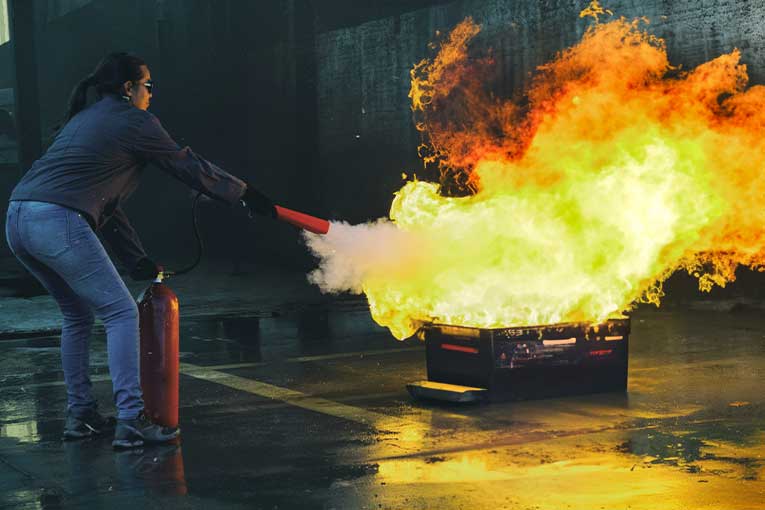
If the fire is small and contained, and it is safe to do so, use available fire extinguishers to suppress the flames.
However, prioritising personal safety and evacuation is paramount.
Assist Others
Assist colleagues who may need help evacuating, especially those with mobility challenges.
Ensure that everyone is accounted for at the designated assembly point.
Do Not Return for Belongings
Once safely evacuated, do not return to the building for personal belongings.
Emergency services will manage the situation, and personal safety takes precedence.
Follow Instructions
Adhere to instructions from emergency services and designated personnel.
Cooperate with their guidance for a coordinated and effective response.
Conclusion
You should now have an understanding of common causes of warehouse fires.
The gravity of warehouse fires cannot be overstated, given their potential for catastrophic consequences.
Safeguarding these vital hubs of commerce requires a multifaceted approach encompassing awareness, prevention, and preparedness.
By comprehending the common causes of warehouse fires, businesses can proactively address vulnerabilities and fortify their facilities against potential risks.
The implementation of rigorous preventive measures, including regular fire risk assessments, strategic placement of safety equipment, and comprehensive staff training, forms a robust defence against flames.
Moreover, fostering a culture of fire safety within warehouse operations is paramount.
Continuous education and training initiatives instil a sense of responsibility among personnel, empowering them to contribute actively to fire prevention and response efforts.
Regular fire drills, along with the proper utilisation of firefighting equipment, further enhance the collective ability to handle emergencies.



